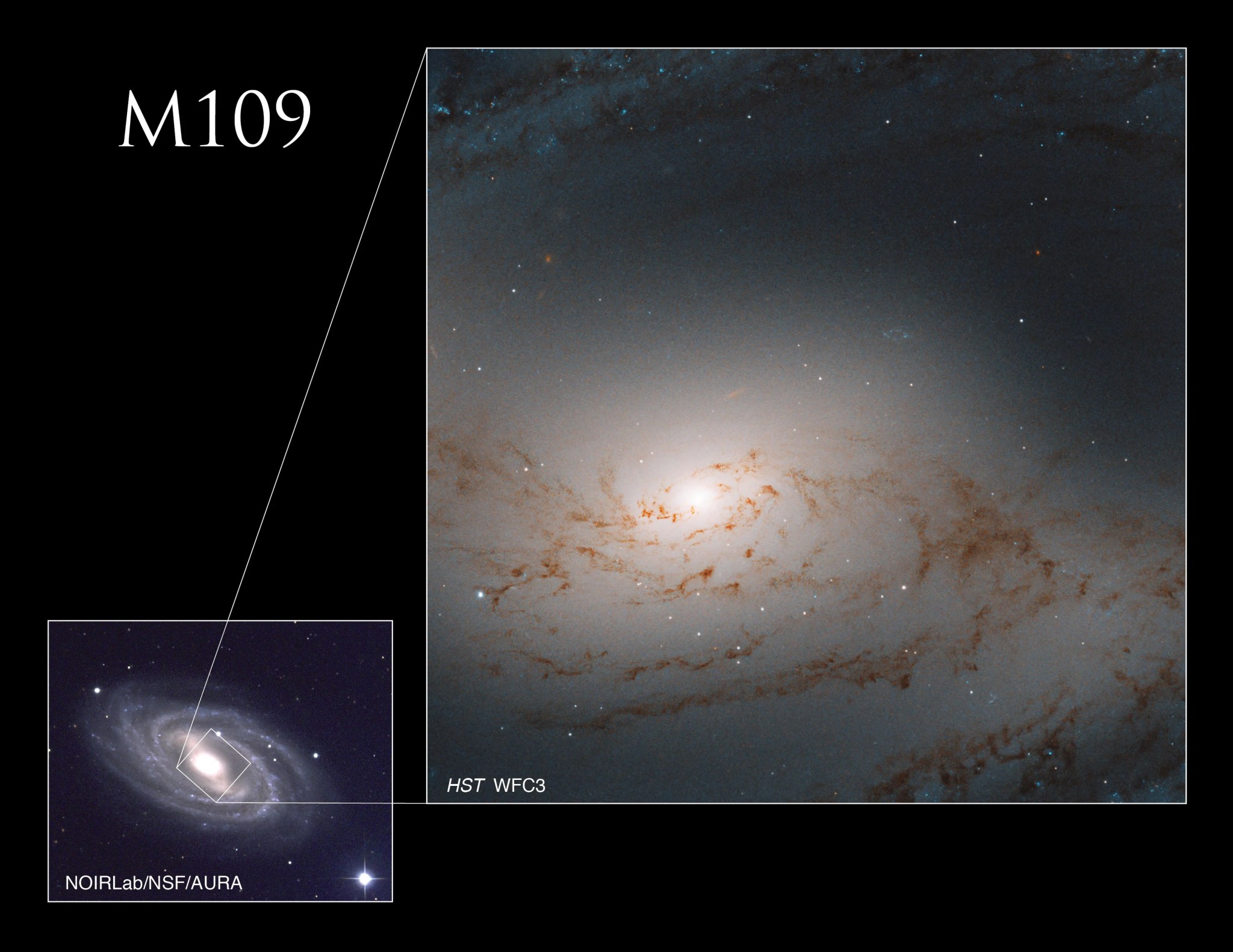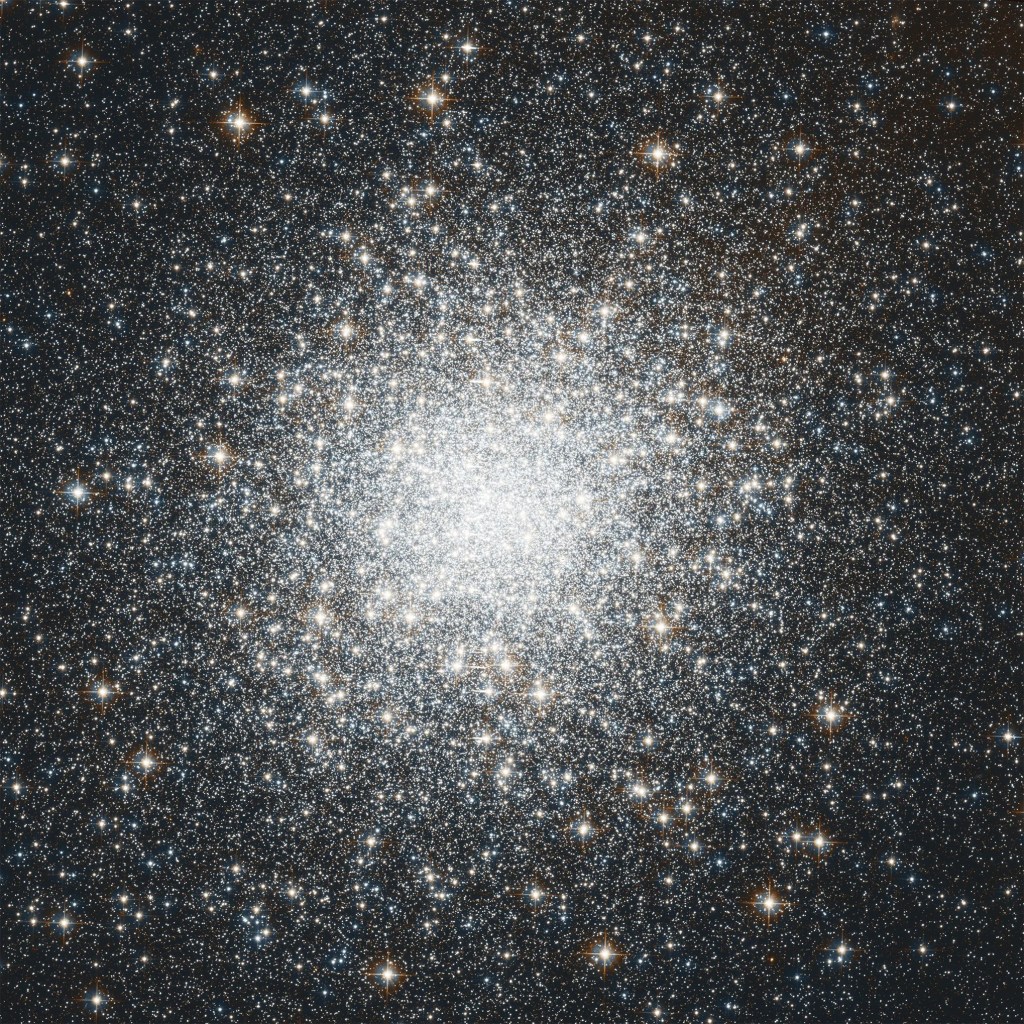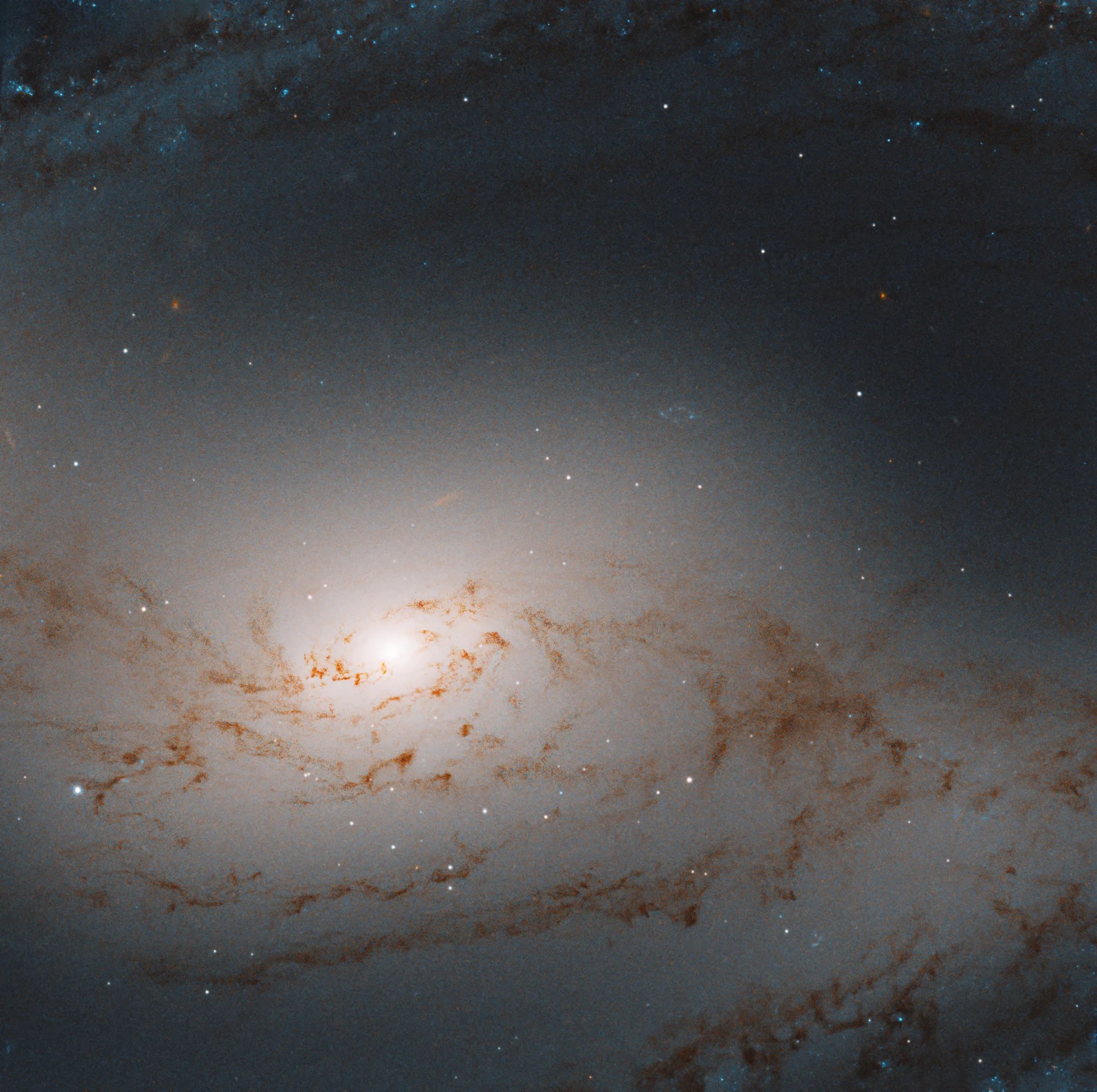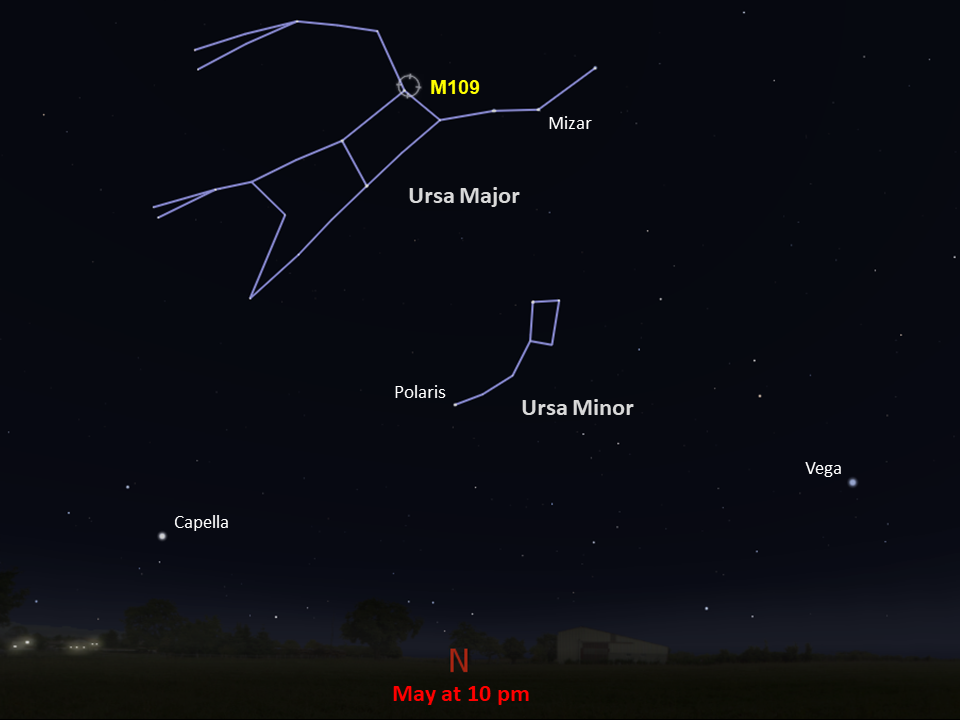Messier 109
This barred spiral is the brightest member of the Ursa Major Galaxy Group of roughly 80 galaxies.
Distance
60 million light-years
Apparent Magnitude
9.8
constellation
Ursa Major
object type
Barred Spiral Galaxy
The brightest member of a group of roughly 80 galaxies known as the Ursa Major Galaxy Cluster, Messier 109 is a barred spiral galaxy that is home to a trillion stars. Observed in 1781 by Charles Messier, the galaxy was officially added to the Messier catalog in 1953. It lies approximately 60 million light-years away in the constellation Ursa Major, and has a magnitude of 9.8, making it one of the faintest Messier objects. Astronomers believe M109’s structure may be influenced by interactions with three satellite galaxies (not shown in this image).
The galaxy is best seen in spring, but is both dim and diffuse, making it extremely difficult to distinguish in light-polluted skies. Use the bright Big Dipper star Phecda ― the bottom corner of the bowl closest to the Dipper’s “handle” ― as a marker for locating it. M109 is just to the southeast of Phecda, and may even be found in the same field of view as the star, if your telescope and eyepiece combination provides a wide enough view. Under a dark sky, a small telescope might reveal M109 as a streak of light, but a larger telescope will show the galaxy’s nucleus surrounded by a fuzzy haze.
This Hubble image, captured by the Wide Field Camera 3 in visible and infrared wavelengths, highlights the bright core of this winding galaxy and was among many observations taken to study supermassive black holes in a wide range of diverse galaxies.

Explore Hubble's Messier Catalog
The following pages contain some of Hubble’s best images of Messier objects.

Overview The Messier catalog, begun by astronomer Charles Messier in the 18th Century and revised over the years, includes some…

Better known as the Crab Nebula, Charles Messier originally mistook Messier 1 for Halley’s Comet, which inspired him to create…

Hubble's image of Messier 2 is comprised of visible and infrared wavelengths of light.

































